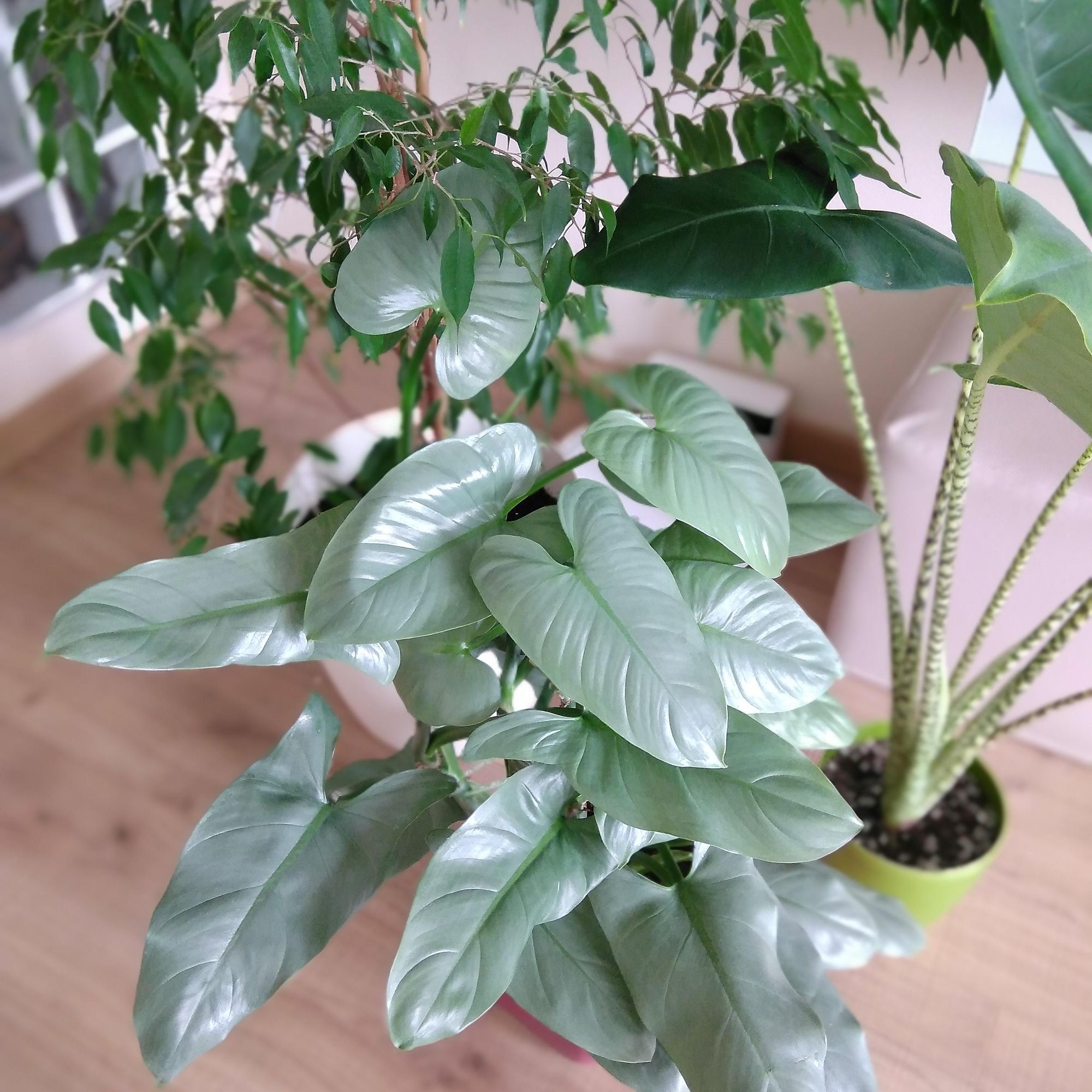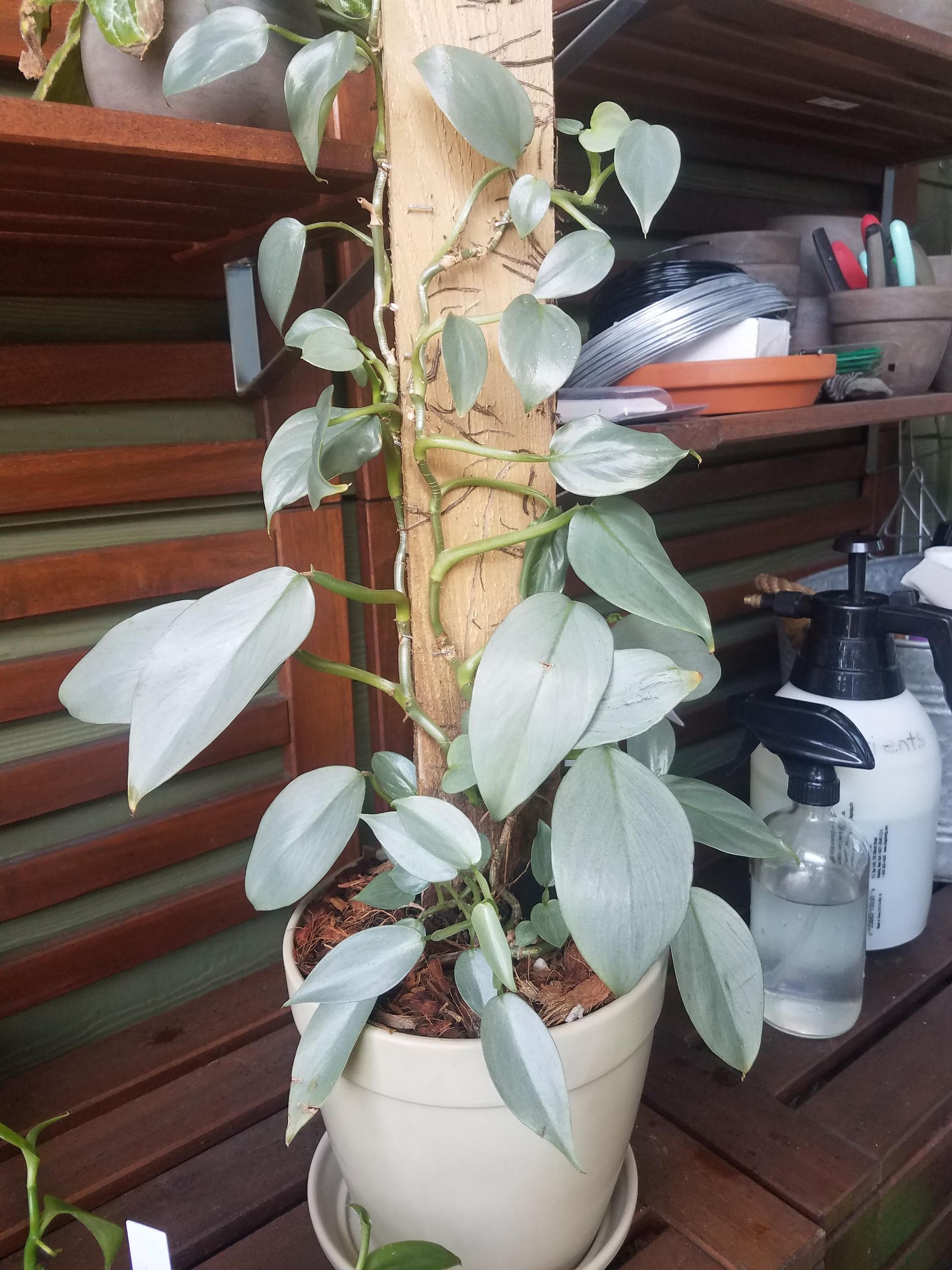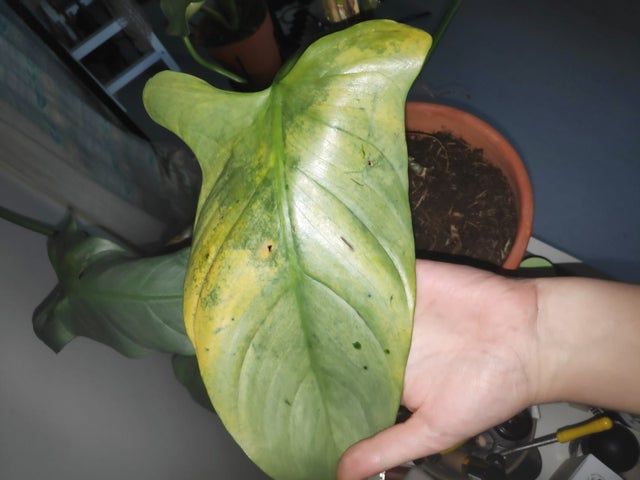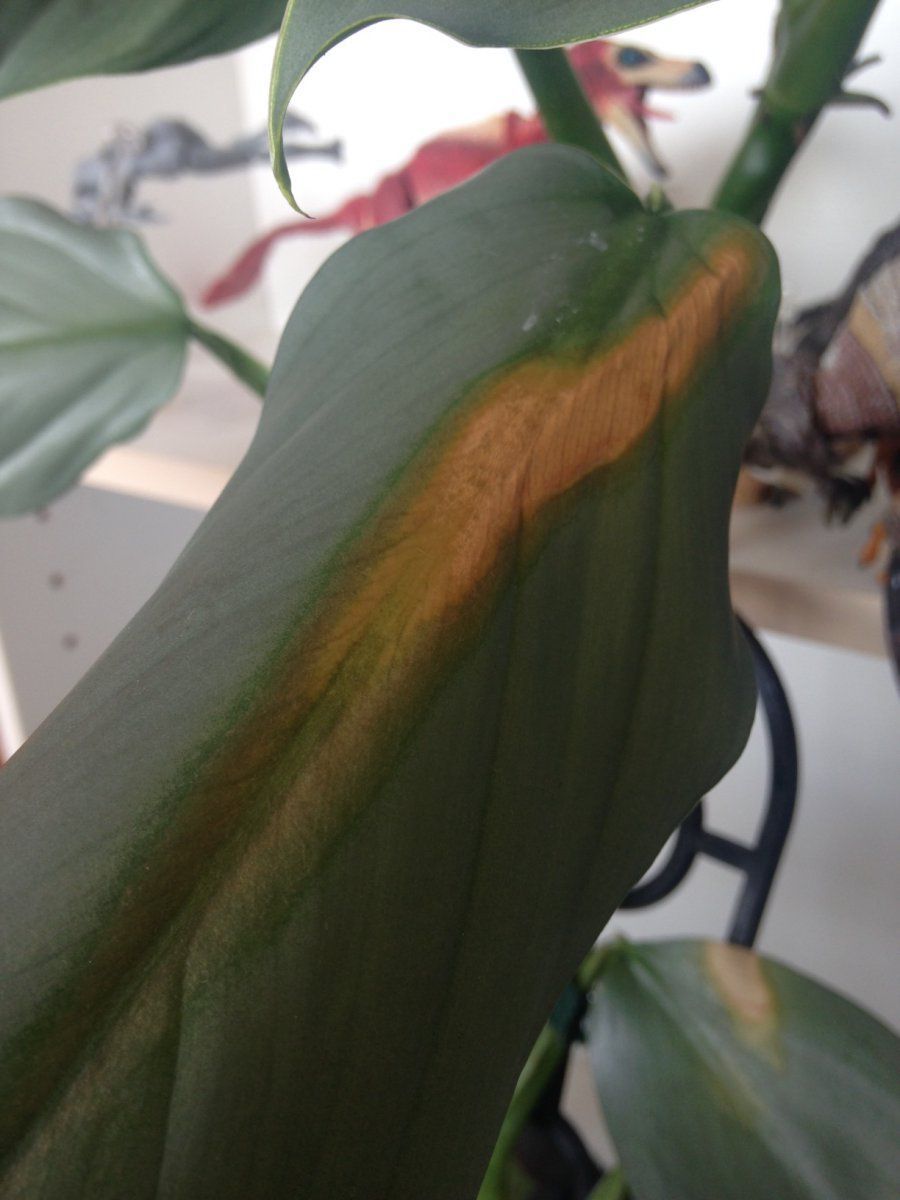Philodendron Hastatum (Silver Sword Philodendron) Ultimate Care Guide & Helpful Tips
Philodendron silver sword is classed as a rare plant because they are under the risk of habitat loss in southeastern Brazil (within protected forest areas)

The Philodendron Hastatum, otherwise known as the “silver sword Philodendron,” is a house plant native to southern Brazil. It is a low-maintenance plant that can thrive under a wide range of growing conditions.
Care for your silver sword plant by growing it in humid air away from direct sunlight, watering when the surface soil is dry, and pruning it with sterilized pruners. Prune evenly around the plant, cutting right above the node for a generous bushy growth. Provide a supporting pole to hold up your silver sword.
Philodendron can reach over 6 feet when grown indoors. Its leaves have a long, blade-like shape and are green in color with a silver touch to them - hence the name “silver sword.”
The name “Philodendron” comes from two Greek words, which are “philo,” meaning “love,” and “dendron,” meaning “tree.”
The term “hastatum” is also of Greek origin, and it is derived from “hasta,” meaning spear. This refers to the sword-like shape of the leaves.

Is the Philodendron Silver sword rare?
Yes– the Philodendron silver sword is classed as a rare plant because they are under the risk of habitat loss in southeastern Brazil (within protected forest areas)
Currently, the hastatum plant is now listed as "stable" in the IUCN Red list of Threatened species.
If you are interested in growing Philodendron Hastatum, this article covers the care tips, pruning, and the common problems you should know.
Let’s start with the care tips.
Philodendron Hastatum Care tips
The Philodendron is generally one of the easy-care houseplants that make little demands on plant-parents. As a matter of fact, it's a well known indoor air purifying plant that filters numerous pollutants from the air including Ammonia, toluene, acetone and benzene amongst many others.
Caring for your silver sword Philodendron includes determining the best lighting and soil type, the best time to water it, and how to go about propagating it.
Light requirements for the silver sword philodendron
The silver sword likes medium indirect lighting, which is typical for most Philodendrons. A spot by the window may still be okay for Philodendron; just make sure it is not the south-facing window, as that would probably be too much of direct sunlight exposure for the plant.
It’s best to avoid direct sunlight exposure.
While a little sunlight probably won’t do any severe damage to the plant, too much direct sunlight can dry out the leaves, which may ultimately lead to growth complications and even kill your plant.
One of the signs that your plant is receiving too much direct light is burnt leaves.
While medium, indirect light is ideal for growing Philodendrons, the plant can survive even on little light, so if for whatever reason you need to put it somewhere darker for a while, you certainly can. However, don’t do it too often, as even Philodendron needs light for photosynthesis.
Humidity requirements
The Philodendron Hastatum likes a humid environment, so unless your rooms are pretty humid, you might want to invest in a room humidifier.
Watering your Philodendron Hastatum
Check the first inch of the soil from the surface. If it is dry, it is time to water the plant. Otherwise, you can give the plant a break from the water supply.
Make sure you don’t let the soil dry out completely; philodendrons don’t like dry soil. It could cause severe root damage, and eventually, the whole plant might dry up.
Soil requirements
Philodendron is an aroid plant, so it enjoys well-draining soil. You can also grow it in sphagnum moss, which will require more frequent watering.
If you are looking for the best growing medium for your silver sword, consider a part organic and part well-draining substrate. Your best bet would be an organic soil rich in nutrients mixed with some perlite or sand.
Hastatum Plant Propagation
If you want to grow more Philodendron Hastatum plants or help your friends grow their own, you can prepare your cuttings at home. Preferably, include at least two nodes in your cutting, so the silver sword has enough leaves to sustain its growth while it sets roots.
Propagating a philodendron silver sword is best accomplished using cuttings. However, you can use seeds if you don’t have access to cuttings. This will take much more time.
Is Philodendron Hastatum fast-growing?
Like most other Philodendrons, the silver sword grows very fast. It has a climbing growth habit, so you might need a supporting pole that it can grow on optimally. While in the wild, which is the rainforests of Brazil for this plant, it can grow as high as 100 feet tall.
However, this is not the case for domestic versions, which can usually grow to around 6 feet tall, assuming they are well supported and the pole is tall enough to allow for that.
Pruning tips for the Phildendron silver sword
When pruning your silver sword, always use sterilized pruners and cut right above the nodes. The purpose of pruning a Philodendron is to encourage a bushy growth rather than a leggy, extensive growth that can occur when the plant does not get enough light.
Let’s explore these two critical steps in pruning.
[1] Sterilize your pruning tool
Sterilizing is vital because plant pests and diseases can accumulate on the cutting surface of the pruning tool. When you cut into a plant, you are essentially creating a wound, which is a potential entry point for pests and other contaminants that can contaminate your plant.
When you sterilize your pruners, let them dry out completely before proceeding to prune the plant.
You can use any sterilizer or sanitizer to sterilize your tools. Any cleaning alcohol will do just fine, too.
[2] Cut right above the node
To get the much-desired bushy growth, you need to prune evenly around your silver sword plant. Always cut right above the node to ensure and stimulate the bushy growth even more.
The node is the part of the plant which is located on the stem. It is this knuckle or joint out of which the leaves grow.
Common problems with Philodendron Hastatum
The most common problems with silver sword philodendrons are yellow leaves, root rot, burnt foliage, and stretched-out plants. Like any other plant on this planet, not even Philodendron is without the problems you might encounter while growing it.
Let’s see how to avoid these problems.
Yellow leaves on Philodendron Hastatum

This is a very common growth problem that many people encounter with this plant. In most cases, the reason for yellow leaves in silver swords is excessive soil moisture as a result of overwatering.
To avoid this– only water the plant when the soil is dry at least 1 inch from the surface. You can check for dryness by digging your finger (or a piece of stick) into the soil by an inch.
If the stick/finger is wet, then you don't need to water the plant.. if it's dry, then its time to water the plant.
The soil ideal for growing Philodendron should be damp but not wet or moist.
Root Rot on Silversword plant

In addition to yellow leaves, root rot is also one of the results of overwatering. The more you overwater your Philodendron, the higher the chances of root rot because the roots have no room to breathe (literally)
Philodendrons like well-draining soil, and they really can’t stand when the soil is too moist. If your plant pot doesn't have holes for drainage, you can make some holes yourself with a drill.
Burnt foliage on Silversword philodendron

Burnt foliage (browning ) is mainly caused by placing your silver sword plant in direct sunlight and also due to a lack of humidity. So you might need an air humidifier or you can leave your philodendron in the bathroom after you shower (for a few hours every day)
Note– The position of your plant is very important, placing it in direct sunlight is dangerous as this almost certainly will cause the leaves to burn eventually.
Final thoughts
The Philodendron Hastatum is a fast-growing low maintenance plant that requires medium indirect sunlight, humid air, well-draining soil, and watering when the surface soil dries up.
When pruning your silver sword plant, first sterilize your pruner with alcohol or another sterilizer, and let it dry. As you prune, always cut above the node and go round evenly for an excellent bushy growth.
There might be complications when growing silver sword Philodendron, like yellowing leaves, rotting roots, burnt foliage. You can avoid these problems by watering only when the surface is dry, placing your plant in humid conditions away from direct sunlight, and providing a supporting pole to hold up your plant.
You don’t have to worry if you forget to water it or leave it in the dark from time to time. Just make sure you don’t do it way too often, and the plant should be just fine.